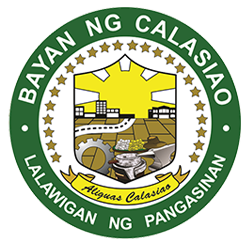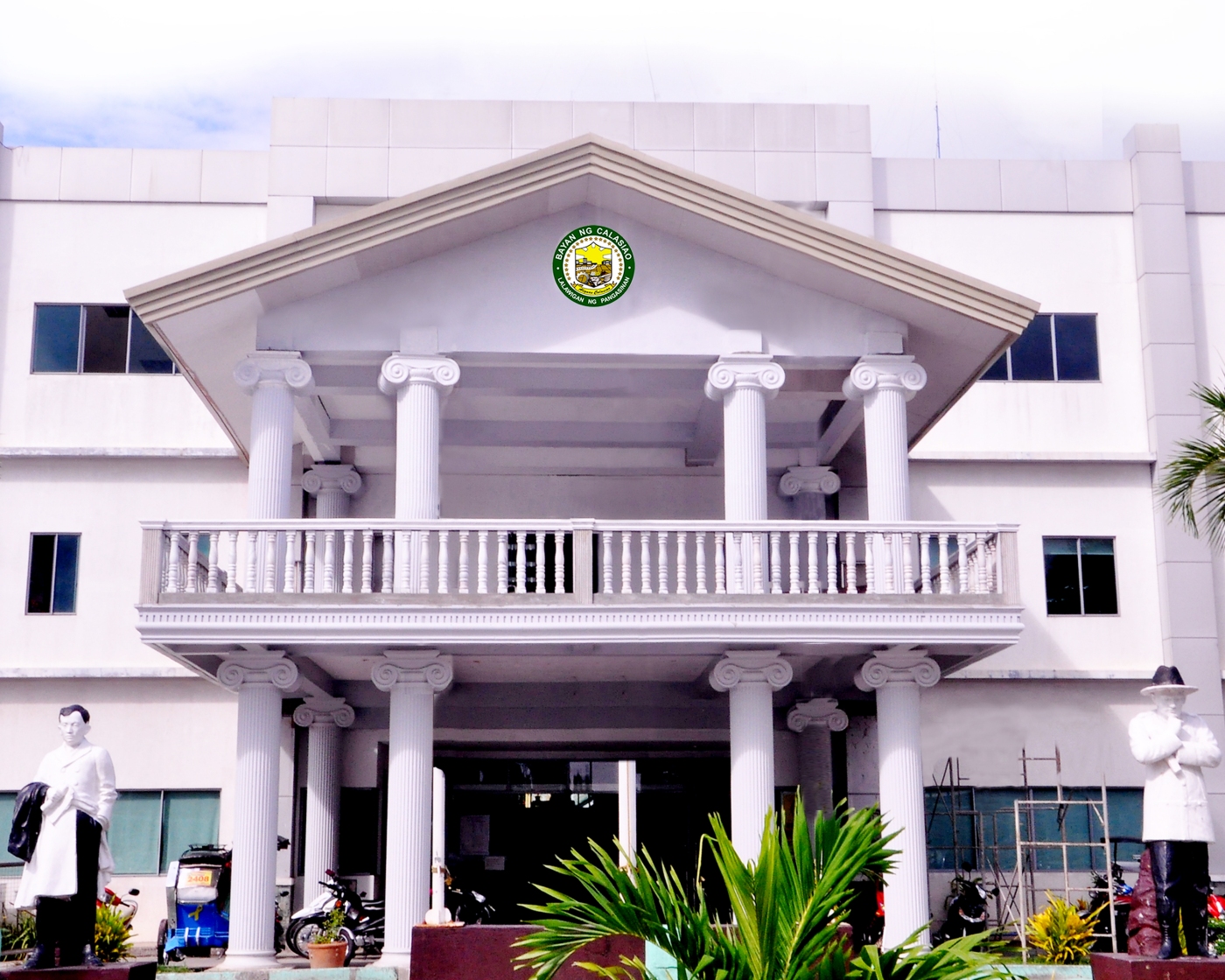The MUNICIPALITY OF CALASIAO is the second oldest town in the Province of Pangasinan. It was founded by the Dominicians in year 1588, a year after the founding of Binalatongan(now San Carlos City).
Calasiao was derived from the root word “LASI” which means a place oof lightning; it was originally a small settlement near the town of Gabon. Because the inhabitants of Gabon were very hostile against Spain, the Dominician Missionaries of Spain staying in the area transferred to Calasiao. They convinced the chiefs of the settlement of Nalsian, Dinalaoan and Calasiao to fuse together to form the new town of Calasiao. Gabon, although a much bigger settlement in the beginning was relegated into being a mere barrio of Calasiao. The first Roman Catholic Church was build in Gabon upon the arrival of the first missionaries. The construction of the Roman Catholic Church in Calasiao followed and was erected when the missionaries left Gabon and was designated as San Pablo De Calasiao. In 1516, Fr. Juan Maldonado De San Pedro Y Martin was the town’s first Parish Priest. This was however rebamed San Pedro Y San Pablo De Calasiao in the same year when it was enlarged. Calasiao takes pride in being one of the first and one of the new towns in Pangasinan that openly resisted the Spanish oppression. During those times, Calasiao was one of the first to join the Malong Rebellion of 1660-1661. It joined the forces of Andres Malong of Binalatongan in its desire for retribution against the Spanish malpractices. In another uprising against the Spanish rule led by Juan Dela Cruz Palaris of Binalatongan, Calasiao was one again of the ten rebel towns that succeeded in driving the Spanish rulers and friars out of the boundaries.
The Roman Chatolic Church was burned. The Alcalde Mayor and other Spaniards besieged by the rebels take refuge in the brick bell tower of the church as the convent was burning. Towards the year 1841 or 1842, the church went up in flames again, a little later Father Dalman started rebuilding it since 1845, Fr. Misa his successor, carried on the work, however before it could be finished it was burned once more in 1852. Father Ramon Suarez rebuilt it between the years 1853-1858. The Roman Chatolic Church of Calasiao is one of the largest and outstanding in the whoke Province of Pangasinan. When Father Bonifacio Probanza, it’s last Dominican Vicar, left in 1898 it was the richest church in ornaments in the whole province.
A tourist or a visitor as he goes up of the staircase leading to a second floor of the convent cannot fail to see a canvas hanging on the wall depicting a Dominican Friar in a playerful mood who is Bishop Miguel Garcia De Nueva Segovia who choose the town of Calasiao as the site of Diocesan Synod held in compliance with a ruling of the synods for better implementation of churches decrees. At this time, the town population is 3,700 “tribulantes” or tax payer of which is less than 600, lives in the town proper of poblacion.
During the American era, secular priests had taken over as Administrators of Parish. The church was renovated when it hosted the Christ the King celebration in 1936. In 1945, the Cathedraland the Archbishop’s palace from Lingayen were temporarily transferred to Calasiao because the one in Lingayen had been destroyed during the war. Thus, Calasiao had this singular privilege, of housing the Archbishop’s Palace.
The Municipality is now a first-class town in a central part of Pangasinan. It has an area of 5,339 hectares containing 24 barangays and 31 sitios and is located between the cities of Dagupan and San Carlos at the north and south respectively. Its population of 85,528 is generally religious and Roman Catholics. The relatively high population is the general effect of the rapid development along the major corridors of Calasiao and a more rapid spill-over migration from Dagupan City. It is bounded in the north by Dagupan City, on the south by the municipality of Malasiqui and San Carlos City. The Municipality of Binmaley lies in the western flank while the Municipality of Mangaldan and Sta. Barbara occupy its niortheastern part respectively. Like other towns of Pangasinan , Calasiao has two distinct seasons, the dry season from November to April and the wet season from from May to October. Calasioa and its environs are frequently subjected to the damages caused by the typhoons and flood. The whole municipality is an unbroken piece of land and its continuity is disturbed by the Marusay, Gabon and Sinocalan rivers that crisscrossed the Municipality. From the view point of Agriculture, all suitable farm areas can be easily irrigated especially with the presence of rivers and streams. Flooding occurs in certain portions of the town near the river banks and in low land areas, especially in Barangays of Talibaew, Gabon and Lasip and the Sitio of Pugo-Nalsian. The municipality is well-traversed by national, provincial, municipal and barangay roads. Transportation along major routes in the community is facilitated by the availability of several buses, jeepneys and tricycles. The road network is an asset to any future development and progress by serving as farm to market roads. The construction of the Calasiao by-pass road Mac Arthur and the Devencia Highways serve to promote development for it process through residential areas.


Leave a comment